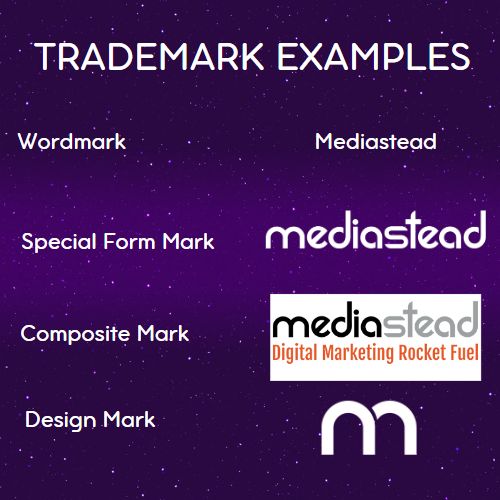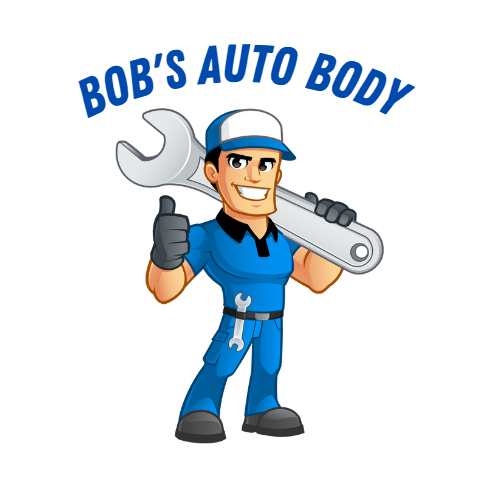Do you own your website?
When Mediastead works with a web design and development client we are often asked this question. Yes, generally a business owns the content of its websites. There are a number of pieces of intellectual property that are developed in the process of building a website. The most common are copyrights and trademarks. While complicated, a basic understanding is enough to protect most of your IP assets.
This article is written from the perspective of a potential Mediastead client. Mediastead client service agreements have distinctive language that helps protect your intellectual property. A contract with any company that builds websites or does brand development should be examined by your attorney prior to signing.
What are the types of Intellectual Property?
The most common types of intellectual property (IP) are:
- Patents: A patent is a legal document that gives inventors the exclusive right to manufacture, use, and sell their inventions for a certain period of time. Patents are granted for new and useful inventions, processes, machines, and other innovations.
- Copyrights: A copyright is a legal right that protects original works of authorship, such as books, music, films, and software. Copyright owners have the exclusive right to reproduce, distribute, and display their work.
- Trademarks: A trademark is a recognizable symbol, design, or phrase that distinguishes a product or service from those of other companies. Trademarks can include logos, brand names, slogans, and packaging.
- Trade secrets: A trade secret is any confidential information that provides a company with a competitive advantage, such as customer lists, manufacturing processes, and formulas. Unlike patents, trade secrets are not publicly disclosed and are protected indefinitely as long as they remain confidential.
- Industrial designs: Industrial designs are the visual features of a product that make it unique, such as its shape, pattern, or color. Industrial designs can be protected by registration, and owners have exclusive rights to their designs for a certain period of time.
We will take a deeper look at two types of IP, copyrights and trademarks, which we deal with most often in our daily work.
“Do I have to register my trademark or copyright?”
No, neither requires registration, however, in some circumstances, it can be highly recommended.
Let’s take a look at copyrights first. There are six general categories for copyrights; literary works, performing arts, visual arts, photographs, motion pictures, and digital content. There are dozens of subcategories including computer programs, video games, jewelry, architecture, and even your own selfies are protected by copyright.
In our example, we will look at website content and the rules and guidelines related to securing your copyright.
Websites are not typically registered with the US Copyright Office. In some cases they don’t meet the guidelines for registration, in others, the content is eligible for copyright protection however the necessity is low and the inconvenience is high related to registering your copyright.
Many websites act as curators of other works that may be copyrightable. For example, the videos on YouTube are not owned by YouTube, by and large. Most of the videos are eligible for copyright, but the copyright lies with the original creator.
For original websites, some of the content may be covered, while others may not be eligible.
To be eligible for copyright, the work must meet three criteria:
- Work must be fixed in a tangible form of expression. The medium could be a sheet of paper, a canvas, or a photographic print. It could even appear on a T-shirt. According to the USPTO, “The fixation need not be directly perceptible so long as it may be communicated with the aid of a machine or device.” A film could be placed on a DVD, a photo can be written on a smartphone, and a website can be written onto a Web server. At the point it’s originally created, the work is covered by copyright law, regardless of how it’s stored. A video created on your phone is covered by copyright, and if it’s uploaded to YouTube or Instagram, the copyright extends but is not altered, generally.
- The work must be an original work of authorship. It must be independently created as opposed to copied from other works.
- The work must be creative in nature. In the US, the requirements for originality are very low. The law requires a “modicum of creativity”. For example, a grocery list isn’t generally creative and is ineligible. A derivative of someone else’s work, for example, a recording of a book created by reading it aloud does not meet the creativity standard. The copyright would remain with the original author.
Google helps protect your copyright. Search engines like Google seek out original content. They penalize other websites that duplicate, even in part, another web page. To be ranked by Google a high percentage of your content must be original.
These eligibility criteria come into play in our work of website development.
An idea or conversation is not protected by copyright. If a potential client comes to us and says “I have a great idea for a website” their idea, if not written down, is not protected by copyright.
For this reason, we ask every potential client, before discussing their idea, to sign a nondisclosure agreement (NDA) that protects both the client and Mediastead. This way they can freely discuss it without risk. At that point, we are acting as an agent, and the finished product, a website, is owned and protected by the original client.
The work must be original and creative. A client says “I have a large block of data, and I want to create a website to distribute that data for a fee.” While this can be done, the data itself may or may not be eligible for copyright protection. If the data is distributed in a truly unique way, the data distribution could be patented but is generally not covered by copyright law.
In a famous court case, a telephone company applied to have all of the information in the phone book copyrighted. Their case was denied. Their copyright was limited to the artwork on the cover and some interior pages. A list of names and phone numbers did not meet the standards for originality and creativity.
How do you protect the copyright of your web pages?
The easiest way is to simply add a notice to the bottom of each page declaring that this information is copyrighted by your organization and that you reserve all rights. For example:
“This website is the copyright of Mediastead, all rights reserved.”
A slightly better version includes the date because copyrights declared by groups or organizations have a limited lifespan of 95 years. Declaring the date used to be very important, such as the date you published a book. In the world of website development, almost no websites expect to remain the same for 95 years. However, the following example would give you slightly more protection.
“This website is ©2023 by Mediastead, all rights reserved.”
You may also use the © symbol without registering your copyright.
Your rights are protected simply by declaring publicly your copyright, however, there are situations that warrant registering your copyright with the US copyright office.
What are your rights as a copyright owner?
You have exclusive rights to:
- Reproduce your work
- Create derivatives of the work
- Distribute copies
- Perform the work publicly
- Display the work publicly
- Authorize others to do any of the above.
The last bullet point can be the most important. Because you are allowed to authorize others, you may also charge a fee or determine a finite period of time that others are allowed to use your work.
For example, Julie Powell spent a year blogging about her experiences cooking all 524 recipes in Julia Child’s Mastering the Art of French Cooking. While inspired by Julia Child, the blog exceeded the originality and creativity standards necessary for copyright.
Julie turned her blog into a book, Julie and Julia: 365 Days, 524 Recipes, 1 Tiny Apartment Kitchen, which later was turned into a movie starring Meryl Streep.
Her copyrighted website created tremendous value.
Why and when should you register your website copyright?
While generally not necessary, there are situations where you should register your website’s copyright.
- Registration is required to file a lawsuit in federal court.
- Registration, if done in the first five years, becomes prima facie evidence of the validity of your copyright.
- Registration of your copyright may be enforced by US Customs and Border Protection to prevent the import of pirated or counterfeit products.
- Timely registration, within the first three months, makes you eligible to collect statutory damages and attorneys’ fees claimed in court suits.
- Registration makes it easier to license your work, collect royalties, and enforce your rights outside of court.
If you have questions about registering your work, Mediastead recommends consulting an attorney specializing in intellectual property.
What is a trademark?
Trademarks play an important part of our work in brand development.
Officially a trademark is defined as “Any word, name, symbol or device (or any combination thereof) used to identify and distinguish goods and services and indicate their source.” [15 U.S.C. § 1127]
There are four types of trademarks:

- Word Mark (e.g. your unique company name)
- Special Form Mark (i.e. your logo)
- Composite Mark (a combination of words, images, logos representing your brand)
- Design Mark (a design or shape that represents your brand)
Your trademarks can be any word, slogan, symbol, design or combination such as product packaging, layout of your app, or even a sound, color, or smell.
A few interesting examples of registered trademarks:
- The shape of a Coca-Cola contour bottle
- The default ring tone of the Samsung device or Skype software
- The shape of a Hershey’s chocolate kiss
- The color of the blue in Tiffany’s distinctive gift boxes
- The red soles of shoes by Jimmy Choo
- The distinctive smell of Play-doh when first opened.
- The pink color of Owens Corning fiberglass insulation
Is registration of your trademark required?
No, you can begin to use a trademark without registering it first. In fact, many advertising slogans are never registered because the lifespan of an advertisement may be less than six months, which can be shorter than the timeframe it takes to complete the registration process.
You simply must declare that the mark is a trademark.
Unlike copyrights which use the © symbol for both registered and unregistered copyrights, trademarks use separate symbols.
A trademark symbol ™ is composed of the letters TM written in superscript next to the mark.
A registered trademark symbol ® is composed of the letter R encased in a circle. It is written in superscript next to a word mark or located below and to the right of other types of marks. This designation can only be used after registration with the USPTO has been confirmed.
Generally speaking, it’s more important to register trademarks than copyrights when it comes to branding and website development.
What are the benefits of trademark registration?
There are several benefits including:
- Protection is for the entire United States and a US registration can be used as a basis for obtaining trademarks in other countries.
- The USPTO will refuse future trademarks from other companies that are “confusingly similar”.
- It aids in the prevention of the production or importation of counterfeit goods.
- Statutory damages and attorneys fees for infringement can be obtained through federal litigation.
One of the most important benefits of registration over simply declaring your trademark is that protection extends nationwide.

For example, a mechanic named Robert begins using the phrase “Bob’s Auto Body” as his trademark and includes a caricature of Bob. Bob decides not to go through the expense and inconvenience of trademark registration.
If another company opens a shop nearby called Bob’s Auto Body, Robert’s attorney could stop them from using the trademark with a cease-and-desist letter.
However, if a shop in another state uses that name, because Bob’s trade doesn’t extend to that area, his trademark does not extend either. Bob would have no legal standing to stop them from using the tradename.
Furthermore, if that company franchises and expands nationwide, it could potentially force Bob to stop using his trademark.
If Robert successfully registers his trademark, his company name will be protected nationwide. Furthermore, if a company uses a similar name with a caricature that could be confused with Bob’s company, the USPTO may refuse to register it.
Your trademarks are some of the most valuable pieces of intellectual property you can own. Registering trademarks can be a vital part of security for any business, large or small.
If you have questions about registering trademarks, we recommend seeking the advice of an attorney who specializes in intellectual property.
How can Mediastead be of assistance?
Mediastead creates brand identity and style guides for many of our clients. It helps them create consistent branding across their products, services, and business interests.
Content of the style guides can be vitally important when applying for trademark registration.
The USPTO requires distinctive creative assets and well-written descriptions in its trademark registration process.
Your trademark attorney can ask us to create specific pieces of artwork to accompany your application.
Read more about Brand Development with Mediastead, or call to set up a free branding strategy session.

